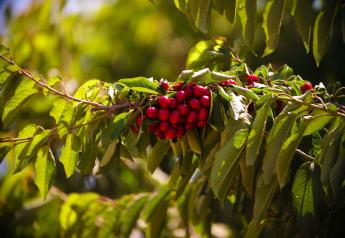Texas growers and distributors poised for good volume, higher labor and freight costs loom

Texas growing regions saw plenty of rain this past summer, and that should be a good foundation for upcoming produce harvests, said Dante Galeazzi, president and CEO for the Texas International Produce Association.
“The Rio Grande Valley had over 30 inches of rain from April through July this year, and the Winter Garden area had fairly similar rainfall as well,” Galeazzi said. In a typical year, the Rio Grande Valley region averages 15 to17 inches of rain, he said. “While that weather was not ideal for last year’s crop, it did provide much-needed moisture to the productions area ahead of this year’s crop.”
Recent weather conditions in Texas have been favorable, while distributors said Hurricane Pamela in mid-October disrupted hot pepper production in Mexico and delayed some start dates there.
Citrus focus
While grapefruit and oranges would typically start the south Texas season in October, Galeazzi said that the 2021 Valentine freeze has resulted in a later-starting crop, now predicted to gain momentum around Thanksgiving and wind down in March.
“While the overall volume will be lighter, we are hearing very positive reports about the fruit size and quality,” Galeazzi said. “Less fruit on the tree means more room for larger sizes.”
TJ Flowers, vice president of operations and sales at Mission, Texas-based Lone Star Citrus Growers, said much of the fruit is also hanging on the internal branches of the tree due to the outer canopy loss after the freeze.
“This phenomenon will hopefully lead to fruit with fewer outer blemishes cause by the wind,” Flowers said.
“(Lone Star Citrus) picked up a significant amount of acreage for this season, so we expect to produce 75% of what we did last year,” Flowers said. “The trees are recovering nicely, but there are fewer pieces of fruit per tree, allowing the fruit to size up a bit more than they would have otherwise.” Lone Star Citrus, like other marketers, will operate on a condensed harvesting and packing schedule, allowing the firm to maximize efficiencies.
The freeze caused a significant increase in grove care costs due to necessary pruning, as well as the need for some growers to re-graft onto the root stock of new plantings that did not fare well, he said. “Our crews worked nonstop throughout the offseason to accomplish this,” Flowers said.
Despite the fierce freeze in February, the longer-term outlook for Texas citrus is positive, he said.
“We are looking forward to next season when we expect our trees to be recovered to 80%,” Flowers said.
Lone Star Citrus markets grapefruit and a variety of orange varieties, including marrs, navel, pineapple and valencia, he said.
Vegetable standing
In terms of Texas vegetables, Galeazzi said Texas herbs have already kicked off by early November, with items such as cilantro and parsley, and cabbage and kale expected to follow in short order.
“Temperatures are starting to cool into the high 50s and low 80s, which are perfect conditions for our winter veg,” Galeazzi said.
Tommy Wilkins, director of sales and business development for Grow Farms Texas, Donna, Texas, said the firm continues to grow its program in south Texas on both domestic and Mexico Grown products.
“Cabbage survived last year’s February freeze and gave us a great Saint Patrick’s day harvest.” Wilkins said. “We look to have even better year this year.”
In Mexico. Wilkins said the company is looking at good cucumber and bell pepper production, along with increasing volume of eggplant and squash. “Hot Peppers have become a bigger offing each year, and jalapeno and serrano are leading that growth,” Wilkins said.
Labor or not
Like other regions of the country, Texas growers and marketers will see freight costs and other inputs maintain current or higher rates through most, if not all, of the season, Galeazzi said.
“Lead-time and forecasting will be essential throughout the Texas season, especially during the holidays of Thanksgiving, Christmas and New Year’s,” Galeazzi said.
With the COVID-19 pandemic, labor is an ongoing big concern for producers, Wilkins said. “Many growers have been forced to reduce the size of their crops with these issues.”
With increasing fuel prices and a tight freight supply, higher freight cost has been impacting the cost of delivered pricing, Wilkins said.
“As freight continues to be a factor, we believe there will be more emphases to get product to load going east out of Texas when possible.”







